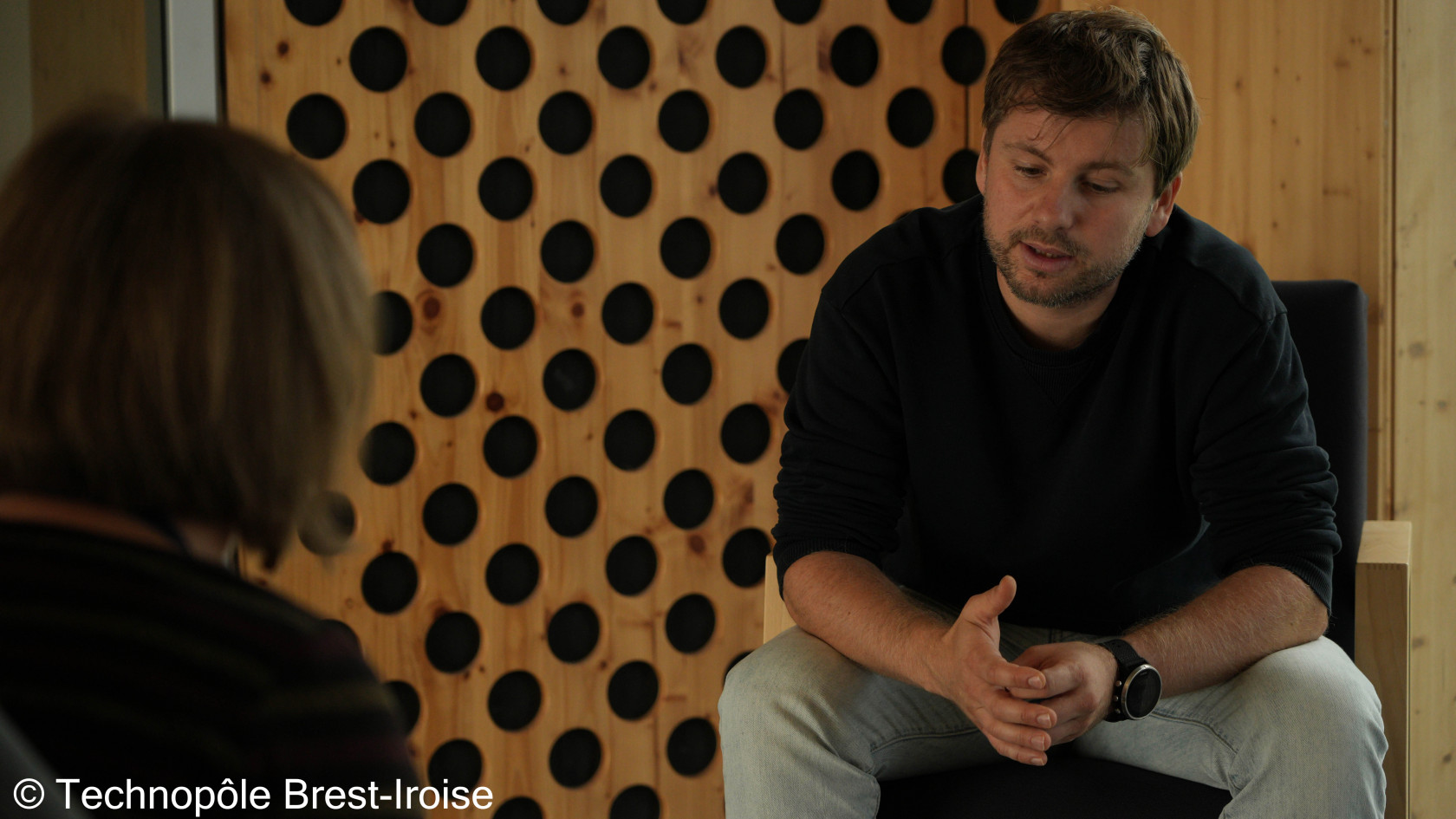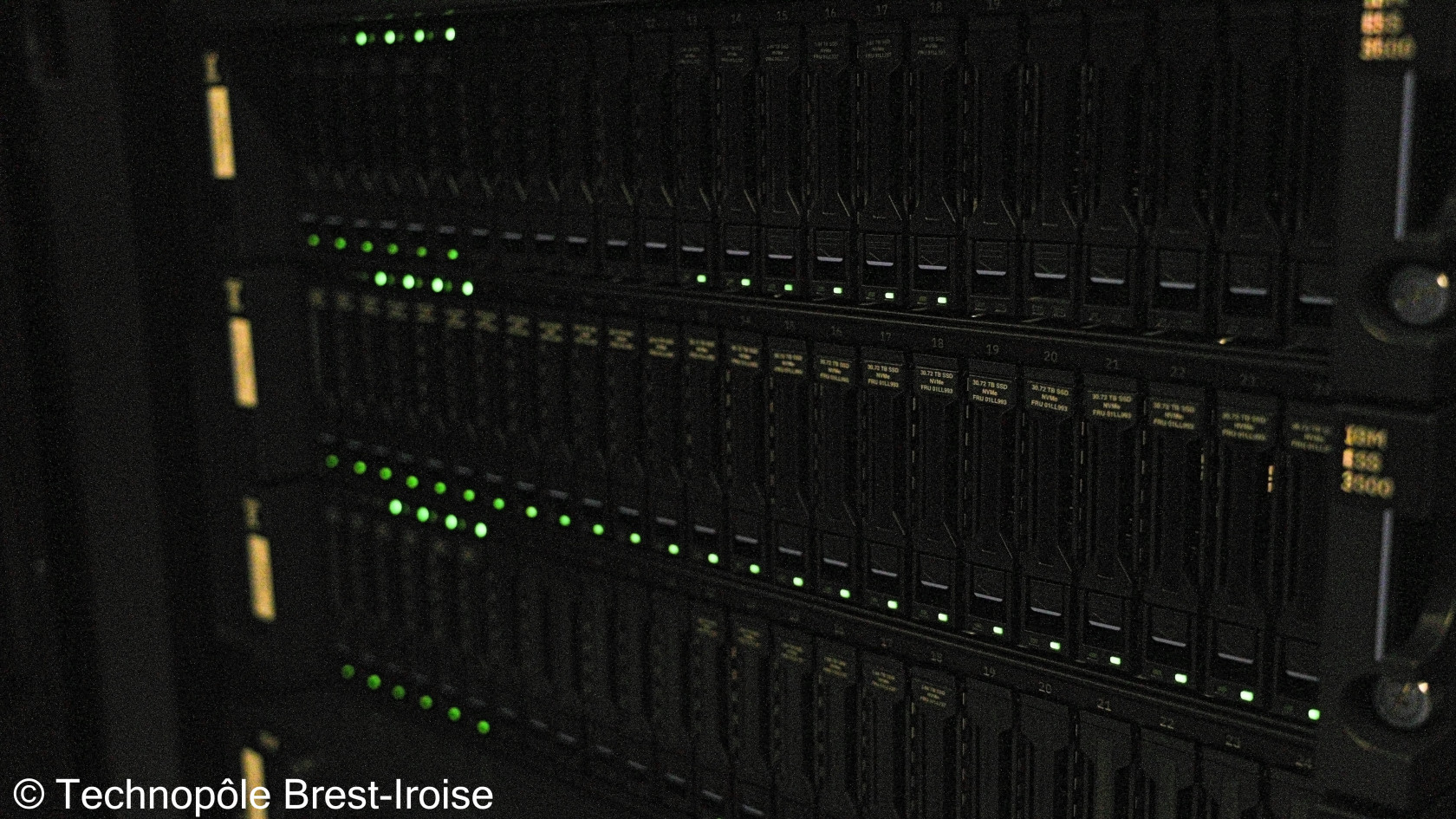SEXTANT, the data engine of Ocean Hackathon®
- At the heart of Ocean Hackathon®: marine data, diverse and catalogued, serving the 67 teams worldwide. Since 2021, the data architecture of Ocean Hackathon® has been built on SEXTANT, the geospatial data infrastructure managed by Ifremer. Behind this collaboration are two data engineers from Ifremer’s Brittany Centre: Amandine Thomas and Julien Meillon.
Amandine and Julien, the geo-magicians of Ocean Hackathon® data.
Scientific Information Systems for the Sea (SISMER), Research Infrastructure and Information Systems Department (IRSI), Ifremer’s Brittany Centre in Plouzané. It is here that the Ocean Hackathon® 2025 data catalogue is being fine-tuned. At the helm: Amandine Thomas and Julien Meillon, both data management engineers and QGIS trainers. Julien also heads the SEXTANT unit.
'The SEXTANT infrastructure,' Julien explains, 'offers three features of particular interest for Ocean Hackathon®: data deposit and cataloguing, the ability to visualise them on a map, and the deployment of the instance on any website via an API.'

Let’s highlight the substantial structuring effort carried out by the SEXTANT team, together with Laura Perrin, who leads Ocean Hackathon® at the Campus mondial de la mer, and all the data managers from the 11 local event organisers: identifying data needs for the 68 challenges; selecting relevant datasets already available in SEXTANT; drafting metadata; defining thematic filters; enriching the catalogue with new data; and connecting portals from other providers (EMODnet, Global Fishing Watch, Copernicus, etc.). All achieved in just a few months!
And that’s only the preparation. On the big weekend itself (October 17–19, 2025), Amandine will also be there as a SEXTANT coach and geomatics expert, supporting the teams in Brest and in other cities. 'For users, this work makes it much easier to find data,' she explains. 'That’s valuable time saved during the weekend, allowing projects to go even further.'

User experience as a driver for evolving the infrastructure
SEXTANT was created in 2001. Since then, the infrastructure has continually evolved to reflect emerging technologies, new regulations (INSPIRE directive, the 2016 Lemaire Law, etc.), and user needs. Each June, a dedicated SEXTANT User Day brings the community together.
The Ocean Hackathon® community differs from SEXTANT’s usual partners—an advantage when it comes to evolving the infrastructure. 'It’s interesting to see how teams navigate through the catalogue,' Amandine notes. What they all have in common: being under the time pressure of the hackathon. 'We are gradually moving towards protocols that offer greater speed and lower latency.' The system has also become more robust—gone are the days when outages had to be patched during the weekend.
What do the teams look for when digging through the catalogue? 'In 2023,' Amandine recalls, 'data from the ILICO network (Coastal and Littoral Research Infrastructure) were widely used. They provide access to datasets covering many themes related to the coastal environment. Another example is Quadrige data, used for the observation and monitoring of the marine and coastal environment, particularly for projects related to coastal pollution.'
With so many datasets and interconnected portals, having a single entry point—as well as coaches to guide teams—is one of Ocean Hackathon®’s key strengths.
Ifremer and the Ocean Hackathon® experience
'Our involvement is at several levels,' Julien explains. 'We are ambassadors of Ocean Hackathon®, data providers, coaches, and of course managers of the data catalogue.' Taking part in the Brest edition also helps to strengthen ties with organisations 'we don’t necessarily meet in our day-to-day work' (Cerema, Météo-France, etc.).
Contributing at the global level of Ocean Hackathon® is also a way to boost Ifremer’s international visibility and give more exposure to its scientists.
'At the beginning, there were few or no Ocean Hackathons. Today, we’re seeing similar formats emerging at the European level. Looking back, by getting involved in this initiative as early as 2016, we can say we were right on target,' Julien concludes.

Bonus
By coincidence, the day after the interview a morning session was held on the renovation of Datarmor. 'Five terabytes of data are stored there for Ocean Hackathon®,' Julien points out. Many projects are planned for the supercomputer, including contributions to the ocean digital twin and marine bioinformatics.
In the meantime, take a journey through the space-time data of oceanographic campaigns.

- En savoir Plus
- Published on 09/19/2025


